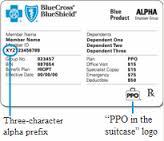 This week, Dr. James Craigie of The Center for Natural Breast Reconstruction answers your questions.
This week, Dr. James Craigie of The Center for Natural Breast Reconstruction answers your questions.
Q: I have had breast cancer three times. A lumpectomy (right) in 2001, a mastectomy (right) 2003, and mastectomy (left) 2008. I’ve only received radiation in my right breast. Am I still a good candidate for the reconstruction?
A: Thank you for your question, I’m sorry you have had to go through breast cancer three times. Depending on your overall health and any other types of surgery you could be able to have breast reconstruction. As you may know already it is not extremely rare for women to have breast cancer in one breast and later have it in the other side. It is definitely less likely than having it on one side only. It is also not unusual for women to undergo bilateral breast reconstruction. To determine if you should undergo surgery we would need to have a bit more info about your overall health. My office can contact you if you like.
Dr. James Craigie
Center for Natural Breast Reconstruction
Have a question about breast reconstruction or post-surgical care you’d like answered from our surgical team? Just ask us!














